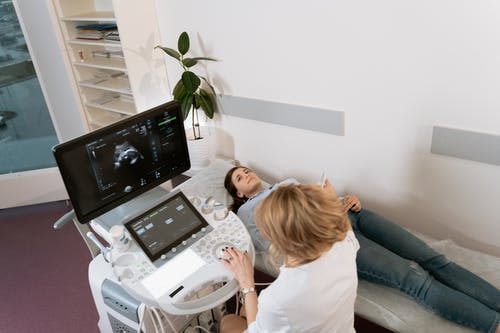In the world of medical diagnostics, imaging technology plays a vital role in helping healthcare professionals accurately diagnose and treat patients. From routine check-ups to emergency care, various imaging techniques are available, each with its own set of advantages and limitations. Among these options, ultrasound stands out as one of the most versatile, non-invasive, and cost-effective methods of imaging, offering unique benefits for both patients and healthcare providers.
In this blog post, we’ll compare ultrasound with other common imaging techniques—such as X-rays, CT scans, and MRIs—and explain why ultrasound should often be your first choice, particularly for healthcare professionals undergoing training or certification in imaging.
1. What Is Ultrasound?
Ultrasound, also known as sonography, uses high-frequency sound waves to create images of structures inside the body. It’s widely used in a variety of medical fields, including obstetrics, cardiology, musculoskeletal care, and emergency medicine. One of the key benefits of ultrasound is that it produces real-time images, which allows healthcare providers to assess dynamic processes, such as blood flow or fetal movement.
Advantages of Ultrasound:
- Non-invasive and painless
- No radiation exposure
- Quick and easy to perform
- Portable and cost-effective
- Provides real-time imaging
2. Ultrasound vs. X-rays: A Safer, Non-Invasive Option
X-rays have been a cornerstone of medical imaging for decades. They use radiation to create images of the inside of the body, typically focusing on bone structures. While X-rays are invaluable in diagnosing fractures, infections, and certain lung conditions, they come with significant limitations.
Key Differences:
- Radiation Exposure: One of the main drawbacks of X-rays is the exposure to ionizing radiation. While the radiation levels in a standard X-ray are low, repeated exposure can increase the risk of developing cancer over time. In contrast, ultrasound uses sound waves, which are harmless and do not involve any radiation.
- Imaging Soft Tissues: X-rays are excellent at imaging bones and dense structures but are less effective when it comes to visualizing soft tissues, such as muscles, organs, and blood vessels. Ultrasound, on the other hand, excels in imaging soft tissues and is often the go-to choice for monitoring pregnancies, assessing organ health, and evaluating blood flow.
Why Choose Ultrasound Over X-rays?
- Ultrasound offers a safer alternative, especially in situations where repeated imaging is necessary, such as during pregnancy.
- It’s highly effective at imaging soft tissues, making it ideal for diagnosing a wide range of conditions, from organ abnormalities to musculoskeletal injuries.
3. Ultrasound vs. CT Scans: Less Radiation, Greater Mobility
A CT (computed tomography) scan combines X-ray images taken from multiple angles and uses computer processing to create detailed cross-sectional images of the body. CT scans provide a wealth of information, particularly for complex cases involving trauma or internal bleeding. However, CT scans come with their own set of challenges.
Key Differences:
- Radiation Exposure: CT scans involve higher doses of radiation compared to traditional X-rays, which increases the risk of radiation-related side effects. Ultrasound, on the other hand, is completely radiation-free, making it the preferred option for pregnant women and patients requiring frequent imaging.
- Cost and Accessibility: CT scans tend to be more expensive than ultrasound, and they require more specialized equipment. Ultrasound devices are often portable, which means healthcare professionals can use them in a variety of settings, including bedside care, in emergency rooms, or even in remote locations.
Why Choose Ultrasound Over CT?
- No Radiation: Ultrasound is ideal for scenarios where reducing radiation exposure is critical, particularly in pregnant women or young children.
- Cost-Effective: Ultrasound is often less expensive, both in terms of equipment and the cost of each scan.
- Portable and Accessible: Unlike CT scans, which require specialized facilities, ultrasound equipment can be moved to different locations, making it a convenient option for mobile diagnostics.
4. Ultrasound vs. MRI: Faster, More Cost-Effective, and Non-Invasive
Magnetic resonance imaging (MRI) uses powerful magnets and radio waves to generate detailed images of the organs and tissues inside the body. MRI provides incredibly high-resolution images and is particularly useful for evaluating the brain, spinal cord, joints, and soft tissues. However, MRI is not without its drawbacks.
Key Differences:
- Cost and Availability: MRI machines are expensive and require specialized facilities to operate. They also tend to be less widely available than ultrasound machines, particularly in remote or underserved areas. Ultrasound, by contrast, is more affordable and can be used in a wider range of settings, including doctor’s offices and emergency rooms.
- Time-Consuming: MRI scans take significantly longer to perform than ultrasound exams, which can often be completed in a matter of minutes. MRI scans typically require patients to remain still for longer periods, which can be uncomfortable for some individuals.
- Patient Comfort: MRI scans can be uncomfortable due to the enclosed space and loud noises of the machine. Ultrasound, being a non-invasive procedure, is generally more comfortable for the patient and doesn’t require the same level of cooperation.
Why Choose Ultrasound Over MRI?
- Faster Procedure: Ultrasound exams are generally quicker, meaning less wait time for results and greater convenience for both the patient and healthcare provider.
- More Affordable and Accessible: Ultrasound is much less expensive than MRI and doesn’t require the specialized equipment or space that MRI does. This makes ultrasound more widely accessible.
- No Special Preparation Required: Unlike MRI, which often requires patients to avoid certain foods or medications before the exam, ultrasound exams are simple, requiring little to no preparation.
5. Why Ultrasound Training is Valuable for Healthcare Professionals
Given the versatility, accessibility, and safety of ultrasound, it’s becoming increasingly important for healthcare professionals—such as midwives, nurse practitioners, physician assistants, and doctors—to be trained in this valuable diagnostic tool. Ultrasound training offers numerous benefits, including:
- Enhanced Diagnostic Abilities: Ultrasound training allows healthcare professionals to assess a wide range of conditions, from musculoskeletal injuries to pregnancy complications, improving their ability to make accurate diagnoses.
- Non-Invasive Patient Care: Ultrasound enables healthcare providers to monitor and treat patients without the need for invasive procedures, reducing risks and enhancing patient comfort.
- Cost-Effective: For healthcare institutions, ultrasound can reduce the need for more expensive imaging techniques like CT scans and MRIs, making it a cost-effective solution for routine and emergency care.
- Increased Patient Trust: Patients often feel more comfortable with non-invasive procedures that don’t involve radiation, and ultrasound provides healthcare providers with a way to explain and show results in real-time.
6. Conclusion: Ultrasound Should Be Your First Choice
While X-rays, CT scans, and MRIs all have their places in medical diagnostics, ultrasound offers a range of unique benefits that make it the first choice in many situations. It’s non-invasive, radiation-free, cost-effective, and versatile, making it ideal for a variety of medical fields, including obstetrics, cardiology, and musculoskeletal care.
For healthcare professionals, investing in ultrasound training is an excellent way to enhance diagnostic capabilities, improve patient care, and stay ahead in a field that increasingly values non-invasive, accessible technology.
At Ultrasound Trainings, we offer ultrasound training programs designed to help you master this powerful imaging tool. Whether you’re a midwife, nurse practitioner, physician assistant, or doctor, our courses will give you the skills and certification needed to integrate ultrasound into your practice and provide better care to your patients. Contact us today to learn more about our ultrasound training programs!


